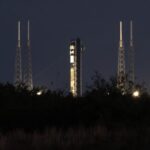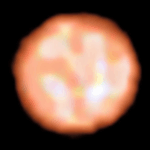Astronomers are living in a golden age of bigger and better telescopes. But even our most advanced technology pales in comparison to the power of nature’s own “cosmic magnifying glasses”—strong
phys.org28- Page
This week, Russia is expected to launch its Bion-M No.2 biosatellite from the Baikonur Cosmodrome in Kazakhstan, carrying 75 mice and 1,500 fruit flies.
Pictures are the key to new insights in the field of astrophysics. Such images include simulations of cosmic events, which astrophysicists at UZH use to investigate how stars, planets and
In the past decade, astronomers have witnessed three interstellar objects (ISOs) passing through the solar system. These include the enigmatic ‘Oumuamua in 2017, the interstellar comet 2I/Borisov in 2019, and
Exoplanet habitability depends on a whole host of factors, with liquid water at the top of the list. It also requires a stable atmosphere, the right chemistry, and possibly even
The Three-Body Problem isn’t just the name of a viral Netflix series or a Hugo Award-winning sci-fi book. It also represents a real problem in astrodynamics—and one that can cause
New research led by Southwest Research Institute (SwRI) has confirmed decades-old theoretical models of magnetic reconnection, the process that releases stored magnetic energy to drive solar flares, coronal mass ejections
A new study from the University of Nottingham has explored the use of fuel-free spacecraft propulsion systems and how they could be used in future space missions.
In a bold, strategic move for the U.S., acting NASA Administrator Sean Duffy announced plans on Aug. 5, 2025, to build a nuclear fission reactor for deployment on the lunar
Elon Musk’s SpaceX announced Friday that its Starship megarocket is scheduled to blast off on a new test flight next weekend after recent attempts have ended in fiery explosions.
-
 012024 in Review: Highlights from NASA in Silicon Valley
012024 in Review: Highlights from NASA in Silicon Valley -
 02Panasonic Leica Summilux DG 15mm f/1.7 ASPH review
02Panasonic Leica Summilux DG 15mm f/1.7 ASPH review -
 03How New NASA, India Earth Satellite NISAR Will See Earth
03How New NASA, India Earth Satellite NISAR Will See Earth -
 04And Thus Begins A New Year For Life On Earth
04And Thus Begins A New Year For Life On Earth -
 05Astronomy Activation Ambassadors: A New Era
05Astronomy Activation Ambassadors: A New Era -
06SpaceX launch surge helps set new global launch record in 2024
-
 07Space Force plans new ‘Futures Command’ amid pressure to speed up modernization
07Space Force plans new ‘Futures Command’ amid pressure to speed up modernization





